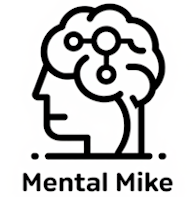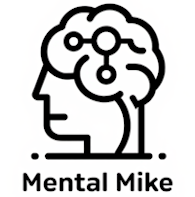It’s easy to assume that people who enter recovery because of a court order are somehow less committed, or less likely to succeed, than those who “hit bottom” and choose help voluntarily. But the science of change, the lived experiences of hundreds of clients, and the energetic wisdom behind the Unified Flux Model all suggest otherwise.
In fact, some of the most profound transformations we’ve witnessed in our pilot recovery program came from individuals who started with folded arms, closed hearts, and zero intention to change. What made the difference wasn’t the mandate itself. It was the discovery of something deeper: the inner force we call Flux - an energetic principle that, when aligned with, initiates real momentum toward healing.
This article will explore how externally motivated clients can transform when offered a trauma-informed, spiritually integrated, and energy-conscious model of care. It also highlights how the UFM provides a new map - not just for sobriety, but for authentic, lasting self-reclamation.
The Myth of “They Don’t Want It”
The recovery field is rife with judgments: “She’s not ready.” “He doesn’t want it.” “They’re just here because of the judge.” These phrases carry a dangerous assumption where willingness is a static trait, and if it’s not present on Day One, transformation isn’t possible. But human beings are not binary machines. We are complex organisms of memory, resistance, longing, trauma, and resilience. Motivation is fluid, context-dependent, and deeply influenced by our energetic state. If someone is stuck in a survival loop - numbed by shame, hijacked by trauma, or bound by generational scripts - they won’t appear ready. But readiness can emerge with the right energetic input.
The Unified Flux Model teaches that every person carries dormant coherence - the capacity for clarity, connection, and change. When met with compassion, structure, and resonance, even the most resistant individuals can begin to shift. Not because they were forced, but because something real woke up inside them.
Resistance Is Often Trauma in Disguise
In our pilot program, which included several clients mandated by courts, child protective services, or probation, we noticed a consistent pattern: those labeled “difficult” were often the most traumatized. One young man, referred by drug court, barely spoke for two weeks. He sat in group with a hat pulled low and arms crossed defensively. His chart noted oppositional behaviors, low insight, and poor prognosis. But through somatic exercises, energy-based grounding, and daily micro-practices that helped regulate his nervous system, he slowly shifted.
By week three, he was speaking. By week four, crying. And on the final day, he stood in front of the group and said: “I thought this was gonna be a joke. But y’all made me feel like I mattered before I even believed it.”
This is not a miracle. It’s the predictable result of nervous system stabilization, relational attunement, and energetic alignment. As Peter Levine (2010) and Bessel van der Kolk (2014) have shown, trauma is not healed by logic. It is healed through felt safety and body-based regulation. The UFM adds to this: trauma is also healed by aligning energy to its original, coherent frequency.
The Physics of Mandated Recovery
From a quantum standpoint, even coerced recovery initiates a change in state. The person, once embedded in addiction’s closed loop, is forcibly moved into a new environment - a treatment facility, a group, a courtroom. This shift alters the energetic field. New variables, new people, new language, and new rituals introduce possibility into what felt like fate.
The Unified Flux Model interprets this as a forced resonance break: the old frequency of addiction is disrupted, and the person becomes energetically available for recalibration. The key is whether the new environment offers coherence, or more chaos. When a mandated client is placed in a system of shame, punishment, or moral superiority, their energy field collapses. But when they’re offered attunement, compassion, and daily practices for self-alignment, the shift is often dramatic. Court mandates don’t prevent healing. They create the opening. It’s our job to ensure something real waits on the other side.
Case Studies from the UFM Pilot Program
Tasha – 34, mandated by CPS:
Tasha came into the program furious. She had lost custody of her children due to ongoing meth use and was required to complete treatment or face permanent termination of rights. She refused individual therapy but tolerated the group. During a UFM grounding meditation, something cracked. “I kept seeing my daughter’s eyes in my mind every time I breathed into my gut,” she later shared.
The daily repetition of breath, body-based journaling, and energetic rituals helped her bypass shame and reconnect with her core self. By week six, she had created a reunification vision board. By week 12, she was voluntarily attending parent-child therapy sessions.
Marcos – 28, referred by probation for alcohol-related property damage:
Marcos came in aggressive and defensive. But once introduced to the UFM practice of “Energy Mapping,” a visual and somatic inventory of where destructive patterns live in the body, he began to articulate what was underneath the rage. “It’s not that I’m angry. I’ve just never felt safe in my own skin.” UFM gave him something no parole meeting ever did: a way to experience safety internally, through breath, posture, and coherence-building practices. He later chose to enroll in a UFM coaching circle—after his mandate had ended.
What’s Different About UFM?
Traditional recovery models often focus on abstinence and behavioral compliance. The Unified Flux Model goes deeper, combining:
This model doesn’t punish clients for starting skeptical. It meets them where they are and invites their nervous system to lead the way.
Hope Grows in Resonant Fields
We’ve seen enough now to know this truth: resistance is not rejection, it’s protection. What looks like defiance is often pain. And what looks like disinterest may be energetic collapse. The clients who began as the most court-ordered, least-interested, and hardest to reach were often the ones who made the most dramatic turnarounds. Not because we convinced them. But because the energy of coherence convinced their body it was finally safe to try.
Final Words: Mandates Aren’t Chains - They’re Doors
Being court-mandated doesn’t mean a person is doomed. It means the universe has created a boundary. Inside that boundary, if we offer coherent energy, grounded practice, and compassionate presence, something miraculous can unfold. The Unified Flux Model was designed precisely for this purpose: to transform forced participation into awakened transformation. We’ve seen it happen. Again and again.
So if you’re reading this as someone who’s mandated, or someone working with people who are, hear this: You are not here by accident. Your alignment is waiting.
You are worthy of healing - even if someone else started the journey for you.
In fact, some of the most profound transformations we’ve witnessed in our pilot recovery program came from individuals who started with folded arms, closed hearts, and zero intention to change. What made the difference wasn’t the mandate itself. It was the discovery of something deeper: the inner force we call Flux - an energetic principle that, when aligned with, initiates real momentum toward healing.
This article will explore how externally motivated clients can transform when offered a trauma-informed, spiritually integrated, and energy-conscious model of care. It also highlights how the UFM provides a new map - not just for sobriety, but for authentic, lasting self-reclamation.
The Myth of “They Don’t Want It”
The recovery field is rife with judgments: “She’s not ready.” “He doesn’t want it.” “They’re just here because of the judge.” These phrases carry a dangerous assumption where willingness is a static trait, and if it’s not present on Day One, transformation isn’t possible. But human beings are not binary machines. We are complex organisms of memory, resistance, longing, trauma, and resilience. Motivation is fluid, context-dependent, and deeply influenced by our energetic state. If someone is stuck in a survival loop - numbed by shame, hijacked by trauma, or bound by generational scripts - they won’t appear ready. But readiness can emerge with the right energetic input.
The Unified Flux Model teaches that every person carries dormant coherence - the capacity for clarity, connection, and change. When met with compassion, structure, and resonance, even the most resistant individuals can begin to shift. Not because they were forced, but because something real woke up inside them.
Resistance Is Often Trauma in Disguise
In our pilot program, which included several clients mandated by courts, child protective services, or probation, we noticed a consistent pattern: those labeled “difficult” were often the most traumatized. One young man, referred by drug court, barely spoke for two weeks. He sat in group with a hat pulled low and arms crossed defensively. His chart noted oppositional behaviors, low insight, and poor prognosis. But through somatic exercises, energy-based grounding, and daily micro-practices that helped regulate his nervous system, he slowly shifted.
By week three, he was speaking. By week four, crying. And on the final day, he stood in front of the group and said: “I thought this was gonna be a joke. But y’all made me feel like I mattered before I even believed it.”
This is not a miracle. It’s the predictable result of nervous system stabilization, relational attunement, and energetic alignment. As Peter Levine (2010) and Bessel van der Kolk (2014) have shown, trauma is not healed by logic. It is healed through felt safety and body-based regulation. The UFM adds to this: trauma is also healed by aligning energy to its original, coherent frequency.
The Physics of Mandated Recovery
From a quantum standpoint, even coerced recovery initiates a change in state. The person, once embedded in addiction’s closed loop, is forcibly moved into a new environment - a treatment facility, a group, a courtroom. This shift alters the energetic field. New variables, new people, new language, and new rituals introduce possibility into what felt like fate.
The Unified Flux Model interprets this as a forced resonance break: the old frequency of addiction is disrupted, and the person becomes energetically available for recalibration. The key is whether the new environment offers coherence, or more chaos. When a mandated client is placed in a system of shame, punishment, or moral superiority, their energy field collapses. But when they’re offered attunement, compassion, and daily practices for self-alignment, the shift is often dramatic. Court mandates don’t prevent healing. They create the opening. It’s our job to ensure something real waits on the other side.
Case Studies from the UFM Pilot Program
Tasha – 34, mandated by CPS:
Tasha came into the program furious. She had lost custody of her children due to ongoing meth use and was required to complete treatment or face permanent termination of rights. She refused individual therapy but tolerated the group. During a UFM grounding meditation, something cracked. “I kept seeing my daughter’s eyes in my mind every time I breathed into my gut,” she later shared.
The daily repetition of breath, body-based journaling, and energetic rituals helped her bypass shame and reconnect with her core self. By week six, she had created a reunification vision board. By week 12, she was voluntarily attending parent-child therapy sessions.
Marcos – 28, referred by probation for alcohol-related property damage:
Marcos came in aggressive and defensive. But once introduced to the UFM practice of “Energy Mapping,” a visual and somatic inventory of where destructive patterns live in the body, he began to articulate what was underneath the rage. “It’s not that I’m angry. I’ve just never felt safe in my own skin.” UFM gave him something no parole meeting ever did: a way to experience safety internally, through breath, posture, and coherence-building practices. He later chose to enroll in a UFM coaching circle—after his mandate had ended.
What’s Different About UFM?
Traditional recovery models often focus on abstinence and behavioral compliance. The Unified Flux Model goes deeper, combining:
- Quantum coherence theory – Every person emits a frequency. Healing happens when that frequency is stabilized.
- Neurobiological safety – Techniques grounded in polyvagal theory and somatic psychotherapy.
- Relational energy fields – Group healing is amplified through resonance, not just discussion.
- Embodied spirituality – Clients reawaken their own sacred potential through non-dogmatic rituals and conscious breathwork.
This model doesn’t punish clients for starting skeptical. It meets them where they are and invites their nervous system to lead the way.
Hope Grows in Resonant Fields
We’ve seen enough now to know this truth: resistance is not rejection, it’s protection. What looks like defiance is often pain. And what looks like disinterest may be energetic collapse. The clients who began as the most court-ordered, least-interested, and hardest to reach were often the ones who made the most dramatic turnarounds. Not because we convinced them. But because the energy of coherence convinced their body it was finally safe to try.
Final Words: Mandates Aren’t Chains - They’re Doors
Being court-mandated doesn’t mean a person is doomed. It means the universe has created a boundary. Inside that boundary, if we offer coherent energy, grounded practice, and compassionate presence, something miraculous can unfold. The Unified Flux Model was designed precisely for this purpose: to transform forced participation into awakened transformation. We’ve seen it happen. Again and again.
So if you’re reading this as someone who’s mandated, or someone working with people who are, hear this: You are not here by accident. Your alignment is waiting.
You are worthy of healing - even if someone else started the journey for you.
References
Levine, P. A. (2010). In an unspoken voice: How the body releases trauma and restores goodness. North Atlantic Books.
Porges, S. W. (2011). The polyvagal theory: Neurophysiological foundations of emotions, attachment, communication, and self-regulation. W. W. Norton & Company.
van der Kolk, B. A. (2014). The body keeps the score: Brain, mind, and body in the healing of trauma. Viking.
Porges, S. W. (2011). The polyvagal theory: Neurophysiological foundations of emotions, attachment, communication, and self-regulation. W. W. Norton & Company.
van der Kolk, B. A. (2014). The body keeps the score: Brain, mind, and body in the healing of trauma. Viking.



